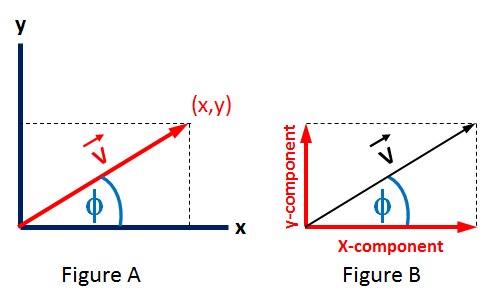V2 - Vector (y component)
Tags | |
UUID | 2b6ee6a4-d965-11e3-b7aa-bc764e2038f2 |
A vector is a mathematical concept of an object that has direction and length. A line alone is not a vector but a line with orientation spanning the distance between two arbitrary points in space is a vector. This equation computes the component of a vector that is the vector's projection on the y-axis of Cartesian coordinates.
Description
Figure A shows a vector, (in red) represented in Cartesian coordinates. A vector can point in any direction, so there is no significance to the fact that in Figure A is pointing to a point in the +x/+y quadrant of the Cartesian coordinates.
The direction and length of define it as a vector and the vector can be displaced to any point in space and still be vector . The beginning of the vector does not have to be located at the intersection of the x and y coordinates. We show vector , with it's beginning point at the origin to simplify the idea that the y-component is the projection of the vector onto the y-axis. The angle, , between the x-axis and the vector, , is used in this equation to compute the y-component of the vector, the projection of the vector, onto the y-axis.
Figure B shows the Cartesian x and y components of the vector . Figure B shows the vector displaced from the vector shown in Figure A but the two vectors could be considered equivalent because they have the same length and they both point in the same direction.
See also
- Comments
- Attachments
- Stats
No comments |
